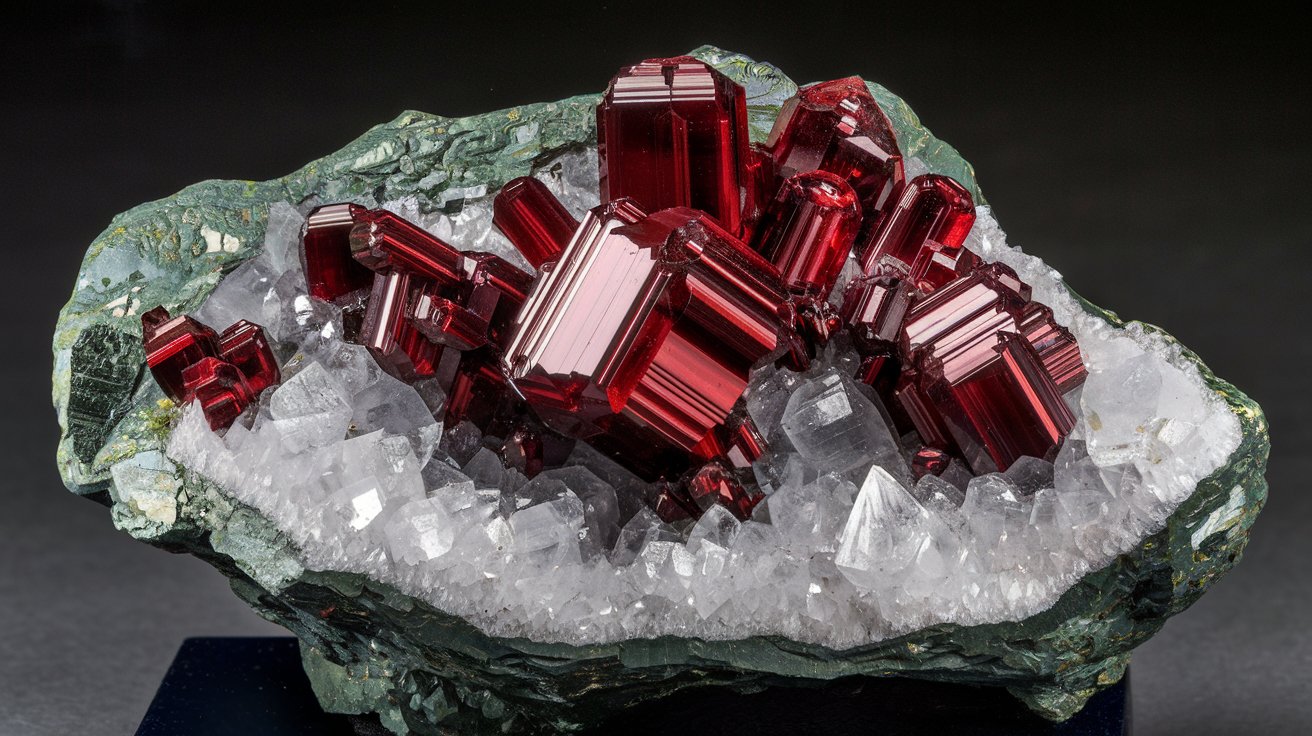
What is Colimaite? Colimaite is a rare mineral that has intrigued scientists and collectors alike. Found primarily in volcanic environments, this mineral is composed of potassium, chromium, and sulfur. Why is it special? Its unique chemical structure and formation process make it a subject of study in geology. Where can you find it? Colimaite is typically located in the fumaroles of active volcanoes, particularly in Mexico's Colima Volcano. How was it discovered? First identified in the 1970s, it has since been a point of interest for researchers. What makes it rare? Its occurrence is limited to specific volcanic conditions, making it a prized find for mineral enthusiasts.
Key Takeaways:
- Colimaite is a rare, bright yellow mineral found near volcanoes. It has unique properties and potential uses in scientific research and industry, making it a fascinating subject for geologists and mineral enthusiasts.
- Despite its challenges, ongoing research on colimaite continues to uncover new information about its formation, properties, and potential applications. Its discovery has sparked interest in finding other new minerals in volcanic environments.
What is Colimaite?
Colimaite is a rare mineral with unique properties. Found in volcanic environments, it has intrigued scientists and mineral enthusiasts alike. Here are some fascinating facts about this mineral.
-
Colimaite is named after the Colima volcano in Mexico, where it was first discovered.
-
It belongs to the halide mineral group, which includes minerals that contain a halogen element as the main anion.
-
The chemical formula for colimaite is K3VS4, indicating it contains potassium, vanadium, and sulfur.
-
This mineral forms in fumaroles, which are openings near volcanoes that emit steam and gases.
-
Colimaite crystals are typically small, often less than 1 millimeter in size.
Unique Properties of Colimaite
Colimaite's unique properties make it a subject of study for geologists and mineralogists. Let's explore some of these characteristics.
-
It has a tetragonal crystal system, meaning its crystals are shaped like elongated rectangles.
-
The mineral is known for its bright yellow to orange color, which makes it visually striking.
-
Colimaite has a vitreous luster, giving it a glass-like appearance.
-
It is relatively soft, with a Mohs hardness of about 2.5 to 3.
-
The mineral is soluble in water, which is unusual for many minerals.
Formation and Occurrence
Understanding how and where colimaite forms can provide insights into volcanic processes and mineral formation.
-
Colimaite forms in high-temperature environments, typically above 200°C.
-
It is often found alongside other rare minerals like sylvite and carnallite.
-
The mineral is usually associated with volcanic gases rich in sulfur and chlorine.
-
Colimaite has been found in only a few locations worldwide, making it extremely rare.
-
Besides the Colima volcano, it has also been identified in the Tolbachik volcano in Russia.
Uses and Applications
While colimaite is not widely used in industry, it has some interesting applications and potential uses.
-
Due to its rarity, colimaite is primarily of interest to mineral collectors.
-
It can be used in scientific research to study high-temperature mineral formation.
-
The mineral's unique composition makes it a potential source of vanadium, a metal used in steel alloys.
-
Colimaite's solubility in water could have implications for understanding mineral dissolution processes.
-
It may also help scientists understand the behavior of volcanic gases and their impact on the environment.
Fun Facts about Colimaite
Here are some fun and lesser-known facts about colimaite that highlight its uniqueness.
-
Colimaite was first described in 2008, making it a relatively recent discovery.
-
The mineral's name was approved by the International Mineralogical Association (IMA).
-
Colimaite's bright color can make it easy to spot in volcanic deposits.
-
Despite its small size, colimaite crystals can be quite well-formed and symmetrical.
-
The mineral's discovery has sparked interest in finding other new minerals in volcanic environments.
Challenges in Studying Colimaite
Studying colimaite presents several challenges due to its rarity and unique properties.
-
The small size of colimaite crystals makes them difficult to analyze using standard techniques.
-
Its solubility in water means that samples must be carefully preserved to prevent dissolution.
-
The high-temperature environments where colimaite forms can be hazardous for researchers.
-
Limited occurrences of colimaite mean that only a few samples are available for study.
-
Despite these challenges, ongoing research continues to uncover new information about this fascinating mineral.
Final Thoughts on Colimaite
Colimaite, a rare mineral, holds a unique place in geology. Found primarily in volcanic regions, it’s known for its distinctive greenish-yellow hue. This mineral, composed mainly of potassium and aluminum, forms under high-temperature conditions, making it a fascinating subject for scientists.
Understanding colimaite’s properties can provide insights into volcanic activity and the Earth’s crust. Its rarity and specific formation conditions make it a valuable find for researchers and collectors alike. Whether you’re a geology enthusiast or just curious about the natural world, colimaite offers a glimpse into the dynamic processes shaping our planet.
So, next time you hear about volcanic minerals, remember colimaite. It’s not just a pretty specimen; it’s a window into the fiery heart of our Earth. Keep exploring and learning, because the world of minerals is full of surprises!
Frequently Asked Questions
Was this page helpful?
Our commitment to delivering trustworthy and engaging content is at the heart of what we do. Each fact on our site is contributed by real users like you, bringing a wealth of diverse insights and information. To ensure the highest standards of accuracy and reliability, our dedicated editors meticulously review each submission. This process guarantees that the facts we share are not only fascinating but also credible. Trust in our commitment to quality and authenticity as you explore and learn with us.


